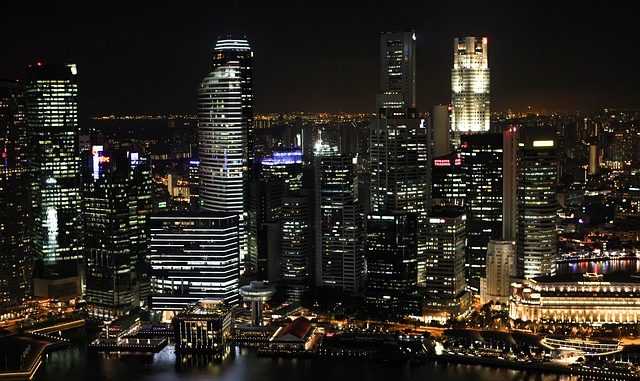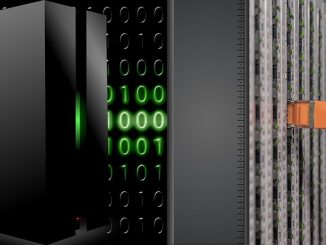
The cities seem suddenly taken with a frenetic appetite for technology: they all knock at the door of the digital world: they become SMART, in other words, intelligent.
What are the foundations of this movement? What is the real power of technologies? Is the real intelligence of cities not to be sought beyond technologies?
First of all, what is a Smart City?
It is very difficult to find a definition that is unanimous. The term now covers concepts with very different intentions and objectives. Originally, the term “Smart City” was used by the industry giants to refer to cities deploying digital technologies.
The first digital applications deployed are often services put on line by a municipality for the inhabitants. Beyond serving citizens, the aim is often to reduce the costs of local public services. These applications enable, for example, on-line formalities such as signalling the failure of a traffic light or informing the public about upcoming cultural events.
More elaborate applications improve the performance of an urban service or a user experience in the city. It is not uncommon to see devices helping car drivers to find a free parking space: green or red light indicating the occupancy of places in a covered parking, mobile app signalling the free places in the street. These applications are not limited to the simple transmission of information but integrate a processing of the raw information collected in the field: they give access to the city at a higher level of intelligence.
Though timidly connected to objectives of cost reduction or performance improvement, this first vision of the Smart City is purely technological and is in line with this very marked trend that we have to consider technology as The Solution to all our Problems. It is nevertheless accessible to the greatest number and today allows many cities to consider themselves as intelligent.
Technology, still technology, always technology
Although technology does not solve all problems, far from it, some cities take a taste of it, some by simple technophilia, others to develop an image of modernity. These cities are deploying more and more digital applications: guiding car drivers along routes that take into account traffic density, energy efficiency programs, intelligent energy networks, mobile applications that provide tourists with personalized tours and more.
The deployment of such a large number of digital apps push cities, for cost reasons, to optimize the necessary data collection infrastructure: sharing and optimizing telecom infrastructures, sensors, data collected via collaborative applications, etc. These cities are entering an era of advanced digitization and limitless use of data. With the help of IT leaders, they are able to connect data from previously independent systems to create even more value for users. Transport, in particular, offers a favourable ground for this evolution.
But are such expenses legitimate? Is such a technological invasion desirable and truly beneficial?
Smart city must be meaningful for citizens
The deployment of each digital application has a clear purpose. But the understanding we have today of the evolution of systems, in which each part depends closely on others, shows that the sum of partial objectives and visions does not necessarily produce a global vision.
At the same time, acquiring, publishing and using data that are closely related to citizens requires transparency and security to be understood and accepted and not to cause rejection.
Engaging in the digitization process is therefore not an innocuous journey for cities.
To make the Smart City’s investments more profitable, to ensure the coherence of all digital applications, to encourage the adoption of new technologies, to accompany citizens in important changes in the way of life and use of the city, implies the respect for certain pillars.
First of all, it is essential that the city acquires a vision. 50% of the world’s population is urban today. By 2050, 70% of the population will live in cities. It is impossible to preserve the urban structures of the past. Cities are pushed to facilitate transport, to drastically reduce their environmental footprint, to improve their attractiveness to the inhabitants, visitors and economic actors, to reduce the loss of time; in short, to be an attractive place to live and work and not a place where resentment, frustration and fatigue develop. This is another picture of Smart Cities that is emerging as well. Digitization is a powerful, indispensable means, but it must remain only a means.
Based on such a vision, it is therefore possible to define a Smart City in less technical terms. In all cases, the energy aspect of the Smart City project is essential in that it contributes directly and indirectly to all the objectives mentioned.
To improve the attractiveness of a city is to improve the experience of the different actors in the “use” of this city. The solutions cannot be imposed: they are defined with the interested parties, the only ones able to judge improvements that concern them directly. It is therefore crucial that the citizen feels himself at the centre of the digitization process and the city. It must reappropriate itself as an actor in the evolution of the city. To allow such a change, the governance of cities must adapt. Municipal teams must learn to solicit more citizens: not enough involving them creates rejection and frustration, too much involving them can, in some cases, expose them to incompetence and lead to inadequate solutions.
The development of digital technologies is a reality for many cities: they can proclaim themselves intelligent. But cities that have fully integrated the global stakes underpinned by Smart Cities are much rarer: some have defined a policy, others have declined it into a vision, others still develop applications consistent with this vision and redefine the place of citizens in the city. These cities have initiated a movement towards the city of the future: to continue, it will require a continuity of action beyond the political changes, a permanent management and updating of the founding vision, a great competence of the city’s council and the conduct of profound changes in the governance of the city.
Published on January 3rd on lemondedelenergie.com



Leave a Reply